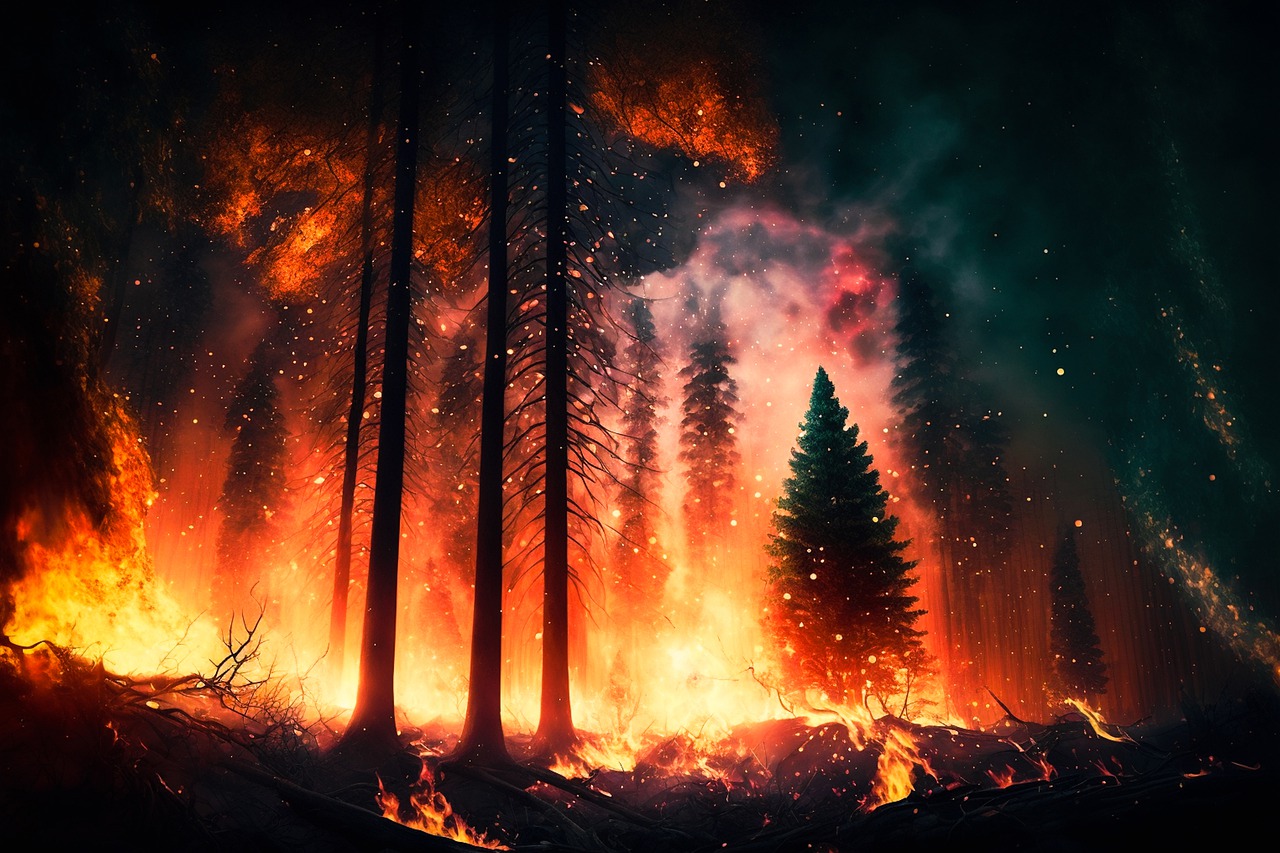Table of Contents
ToggleIntroduction
Wildfires have been a part of the earth’s ecosystem for millions of years, but the scale and frequency of these fires have increased dramatically in recent times. Climate change has a significant role to play in this rise, and it’s crucial to understand the link between the two. In this article, we’ll explore the relationship between wildfires, climate change, and sustainability, and what we can do to promote sustainability and reduce the risk of these fires.
Understanding Wildfires
Wildfires are uncontrolled fires that spread through forests, grasslands, and other natural areas. They can be caused by various factors, including human activities such as arson, campfires, or fireworks. However, the primary cause of the recent increase in wildfires is climate change. As temperatures rise, droughts become more frequent and prolonged, providing ideal conditions for fires to spread.
The Link Between Wildfires and Climate Change
The primary cause of wildfires is the combination of dry vegetation, high winds, and a spark (such as lightning or human activity). However, climate change has exacerbated the conditions that contribute to these fires. Rising temperatures and changing rainfall patterns have led to longer, drier periods, making it easier for fires to start and spread. In addition, stronger winds and increased atmospheric carbon dioxide have created an environment that is more conducive to fires.
Impacts of Wildfires on the Environment
The effects of wildfires on the environment are far-reaching and long-lasting. Smoke and ash from the fires can contaminate water sources and harm wildlife, leading to a decline in biodiversity. The fires also release large amounts of greenhouse gases into the atmosphere, contributing to global warming and exacerbating the effects of climate change. In addition, the destruction of forests and other habitats can lead to soil erosion and an increased risk of flash flooding.
The Economic Cost of Wildfires
The cost of fighting wildfires is enormous and continues to rise as the frequency and severity of these events increase. In addition to the cost of suppressing the fires, there are also indirect costs such as property damage and loss of income for businesses. These costs are not only felt by the affected communities but by the entire country, as the effects of wildfires ripple throughout the economy.

Mitigating the Effects of Climate Change
To mitigate the effects of climate change on wildfires, it is crucial to reduce greenhouse gas emissions. This can be achieved through a combination of measures, including reducing energy consumption, investing in renewable energy sources, and improving energy efficiency. Governments can also play a role by implementing policies to promote sustainability, such as tax incentives for companies that invest in renewable energy.
Sustainability and Wildfires
Sustainability is a critical aspect of the efforts to combat climate change and its effects on wildfires. By taking a sustainable approach to energy production and consumption, we can reduce the carbon emissions that contribute to climate change. This, in turn, will help to reduce the frequency and severity of wildfires, as well as other impacts of climate change.
The Importance of Sustainable Land Management
Sustainable land management practices are also essential to reducing the risk of wildfires. This includes reducing the amount of fuel available for fires to spread, such as by clearing undergrowth in forests and planting fire-resistant vegetation. In addition, communities can take steps to reduce the risk of wildfires, such as by creating fire-wise communities and educating the public about the importance of reducing the risk of fires.
Promoting Sustainability to Mitigate Wildfires
To reduce the risk of wildfires and promote sustainability, we need to address the root cause: climate change. This involves reducing greenhouse gas emissions and transitioning to clean energy sources. In addition, there are several measures that can be taken to reduce the risk of wildfires and promote sustainability:
- Implementing fire-resistant building codes
- Developing fire management plans for communities and parks
- Promoting sustainable forestry practices
- Encouraging the use of alternative transportation methods
- Promoting water conservation to reduce the risk of drought
Frequently Asked Questions
- What is the main cause of wildfires? The main cause of wildfires is a combination of dry vegetation, high winds, and a spark (such as lightning or human activity). However, climate change has exacerbated the conditions that contribute to these fires.
- How do wildfires contribute to climate change? Wildfires release large amounts of greenhouse gases into the atmosphere, contributing to global warming and exacerbating the effects of climate change.
- What can be done to reduce the risk of wildfires and promote sustainability? To reduce the risk of wildfires and promote sustainability, we need to address the root cause: climate change. This involves reducing greenhouse gas emissions and transitioning to clean energy sources. In addition, there are several measures that can be taken to reduce the risk of wildfires and promote sustainability, such as implementing fire-resistant building codes, developing fire management plans, promoting sustainable forestry practices, encouraging alternative transportation methods, and promoting water conservation.
Conclusion
Wildfires, climate change, and sustainability are all interconnected and require a comprehensive, long-term approach to address. By reducing greenhouse gas emissions, promoting sustainability, and taking steps to reduce the risk of fires, we can protect our environment and secure a brighter, more sustainable future for generations to come. The time to act is now, and it’s up to each one of us to do our part to promote sustainability and reduce the risk of these








2 thoughts on “Wildfires, Climate Change, and Sustainability: A Burning Concern”
Pingback: The Impacts of Climate Change and What We Can Do to Address It
Pingback: Michael Crichton: A Controversial Figure in the Climate Change